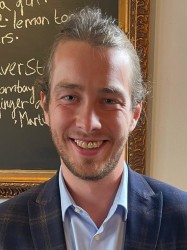BibTex format
@article{Henderson:2023:10.1039/D3EE02571C,
author = {Henderson, C and Luke, J and Bicalho, I and Correa, L and Yang, E and Rimmele, M and Demetriou, H and Heutz, S and Gasparini, N and Heeney, M and Bagnis, D and Kim, JS},
doi = {10.1039/D3EE02571C},
journal = {Energy and Environmental Science},
pages = {5891--5903},
title = {Charge transfer complex formation between organic interlayers drives light-soaking in large area perovskite solar cells},
url = {http://dx.doi.org/10.1039/D3EE02571C},
volume = {16},
year = {2023}
}

